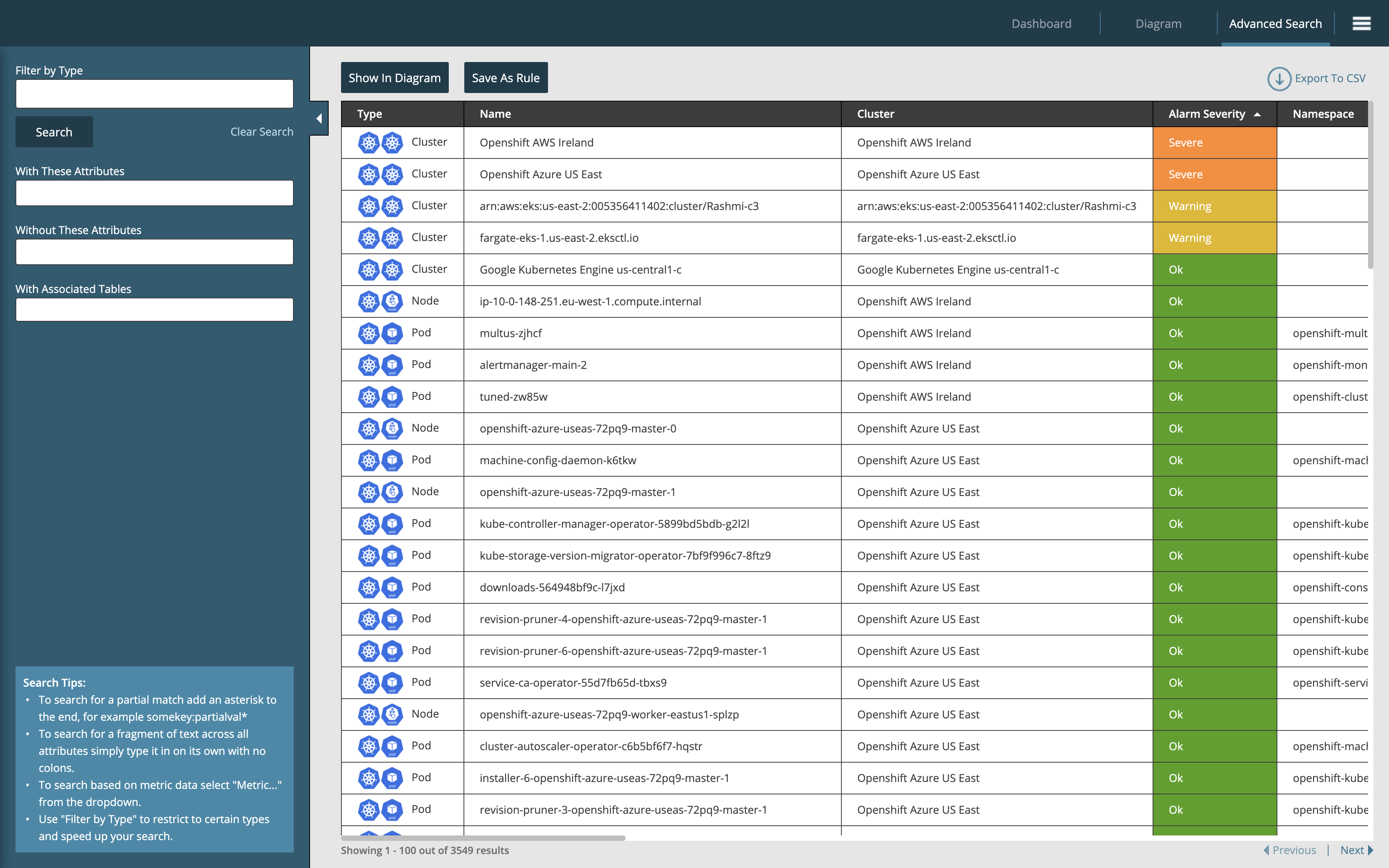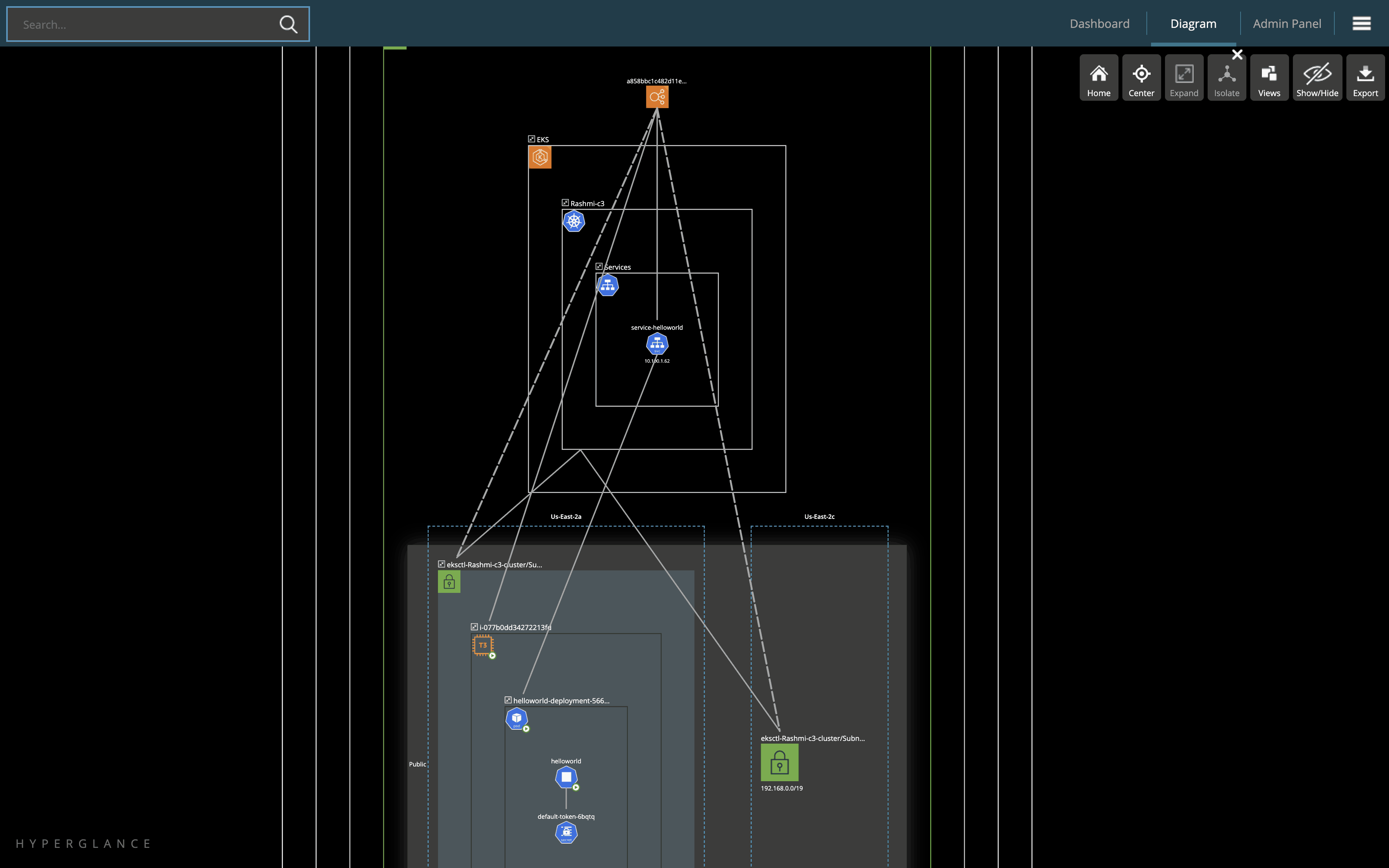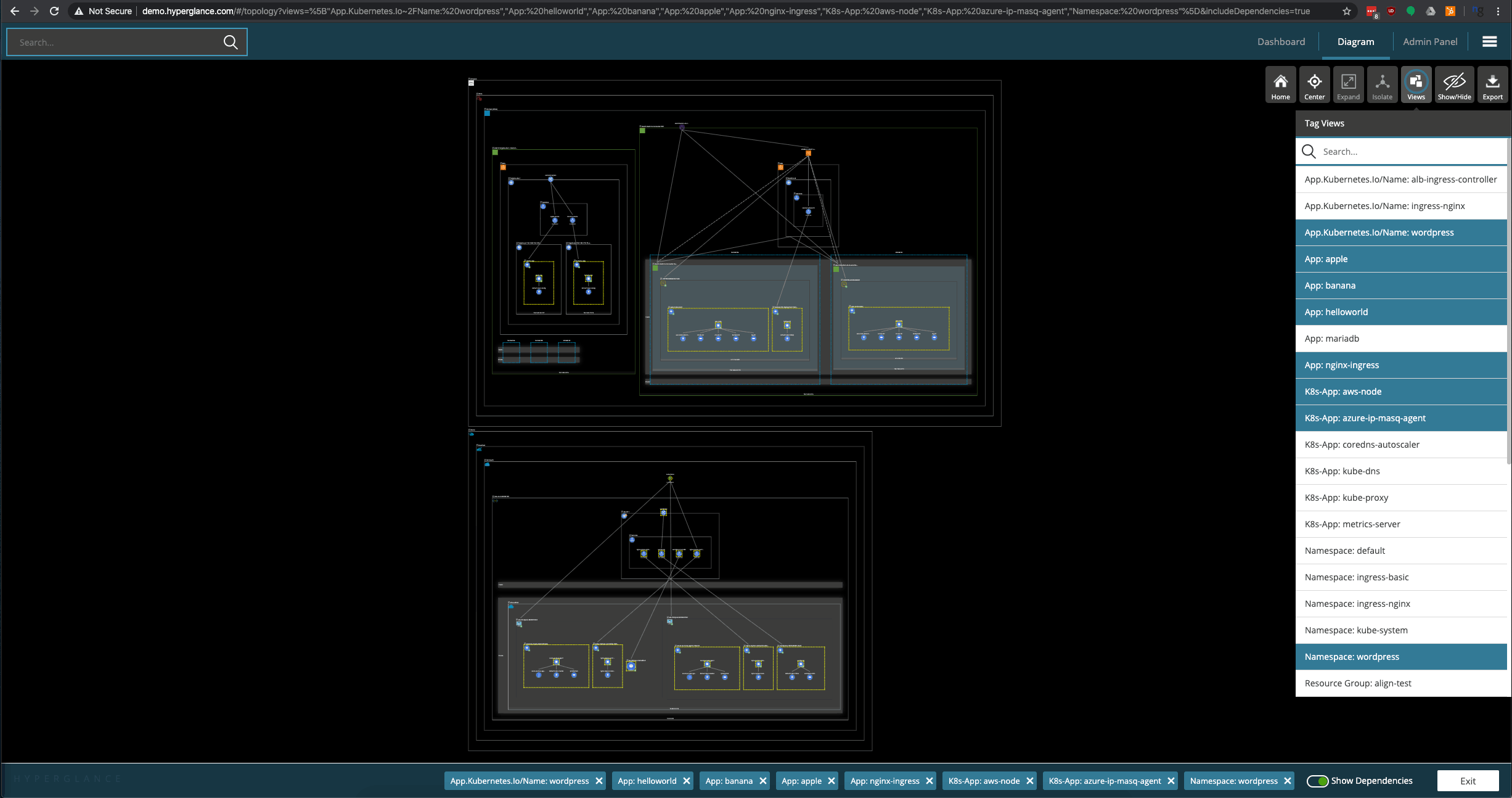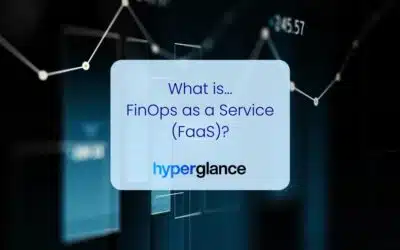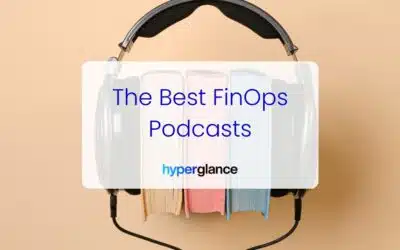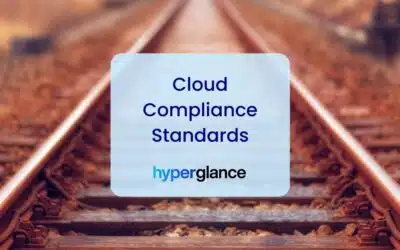Kubernetes Diagrams, Inventory & Optimization
Automatically document your cloud
Search your inventory and its metadata
Export diagrams as Visio, PNG, or CSV
EKS, AKS, & OpenShift support
Agentless, self-hosted on your VM
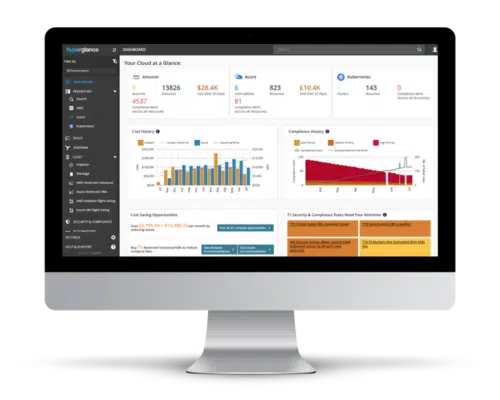








Kubernetes Architecture Diagrams
Generate automatic diagrams of your Kubernetes infrastructure
Visualize your K8s resources and their AWS or Azure dependencies in an automatic, real-time, dynamic diagram that is easy to understand and scalable.
- Automatically generated diagrams that update in real-time - no user input needed
- Interactive with detailed metadata for every resource
Trying to figure out how Kubernetes is configured, or how one service relates to another can be challenging.
Hyperglance creates a complete dependency model and a real-time, interactive cloud diagram. It then overlays data including, attributes, security group data, load balancer data, route tables, alarms and metrics. The end result is a searchable, automated, infrastructure diagram with customizable capabilities.
Global Inventory
See your complete global inventory including search and filter
Find what you need, when you need it.
- Aggregated inventory of all your clusters
- Combined with your corresponding AWS & Azure inventory
- Search across all your clusters & Clouds, find things in seconds
- Go directly to the resource in your Kubernetes diagram with just one click
- Filter and export results to CSV
- Advanced search covers metadata, performance metrics, alarms
- API accessible
Easily find security holes and misconfiguration over your entire multi-cloud Kubernetes infrastructure. Hyperglance aggregates all of your cluster data and allows you to search across Namespaces, services, pods, contains and volumes. Stop trying to remember where things are, just search.
Export Cloud Diagrams & Search Results
VSDX, PDF, PNG, JSON & CSV exports of diagrams and search results
Hyperglance's Kubernetes capabilities allow you to export your cloud diagram to Visio or CSV as often and whenever you need.
- Export diagrams to PNG and Visio (download VSDX sample)
- API driven. Use our API to create and pull diagrams or inventory information
- Export inventory to .csv, open in Excel, Google sheets
- Export as often as you like, no limits
- Inventory updates every few minutes
With two clicks of the mouse or an API call you can export the whole, or part of the diagram to VSDX or PNG format, it only takes seconds. You can export part, or all of the inventory data into CSV or JSON format and use the data however you like.
Show Connected AWS & Azure Resources
Includes connections to AWS & Azure resources
You don't use Kubernetes by itself in a cloud, Load Balancers and DNS services are just some of the cloud resources that you use in conjunction with your Kubernetes services.
Hyperglance pulls in AWS and/or Azure inventory, then creates a combined diagram to show your pods, services or container connections.
Kubernetes & Multi-Cloud Visualization
Combined Inventory & diagrams for all your Kubernetes deployments
Whether your Kubernetes clusters are deployed in AWS, Azure, GCP or in your own data center, Hyperglance will generate diagrams of them all.
Agentless & Secure
Hyperglance is self-hosted on your VM, mitigating the security concerns associated with a traditional SaaS solution.
- Your data, your rules: All information is securely stored on your instance/VM, ensuring absolute ownership and control.
- Secure connectivity: Hyperglance only interfaces with AWS, Azure, or Kubernetes APIs, never directly accessing your resources.
- Credential confidence: No need to risk compromise by sharing credentials with third parties.
- Compliance concerns, eliminated: Streamline approval and rest easy with our compliance-friendly solution.
Kubernetes FAQs
When would you use Kubernetes?
Kubernetes, often referred to as K8s, is an open-source system that automates the deployment, scaling, and management of containerized applications.
If you've ever managed an application composed of multiple microservices or dealt with the complexities of cloud infrastructure, Kubernetes can be a game-changer.
At its heart, Kubernetes consists of several key components:
- Pods: These are the smallest, most basic deployable units in Kubernetes, which can contain one or more containers. They bundle applications and their dependencies together.
- Services: Services are policies that dictate network traffic rules and allow your applications to communicate with each other or the outside world.
- Volumes: Volumes take care of data persistence, allowing data to survive container restarts.
- Namespaces: These allow you to separate resources into distinct groups for better organization and security.
- Deployment: Deployment ensures the desired number of Pods are always up and running, managing the lifecycle of Pods to provide updates and rollbacks without any downtime.
So, why would you need Kubernetes? Here are a few key benefits:
- Scalability: Kubernetes can easily manage and scale your applications based on the needs of your workload, reducing the costs associated with over-provisioning.
- Portability: Kubernetes allows you to run your applications anywhere without having to change your operational code. Whether on-premises, in the public cloud, or in a hybrid environment, Kubernetes has you covered.
- Efficiency: By grouping together application containers into Pods, Kubernetes maximizes resource usage, helping you get the most out of your hardware.
- Resiliency: Kubernetes ensures that your applications are always available to your users. It continually checks the health of your applications to detect and replace instances that are not responsive.
- Automated Rollouts & Rollbacks: With Kubernetes, you can update your application or roll back to a previous version effortlessly, ensuring continuous delivery and reducing downtime.
Hyperglance makes Kubernetes even more user-friendly by offering comprehensive visualization and control of your Kubernetes environments.
So, let Kubernetes take the hard work out of managing your applications, and let Hyperglance help you see the bigger picture.
What is a Kubernetes architecture diagram?
A Kubernetes architecture diagram is a visual representation of how the various components of a Kubernetes system interact with each other. It's an invaluable tool for understanding the inner workings of Kubernetes and how its pieces fit together to deliver the key benefits we've discussed, such as scalability, efficiency, and resiliency.
By viewing a Kubernetes architecture diagram, you can get a better understanding of how the platform manages and orchestrates containers, ensures load balancing, maintains storage, handles networking, and keeps the overall system resilient and scalable.
Why are Kubernetes architecture diagrams important?
Modern Kubernetes architecture diagrams allow you to get a better understanding of how the platform manages and orchestrates containers, ensures load balancing, maintains storage, handles networking, and keeps the overall system resilient and scalable.
How does Hyperglance create Kubernetes diagrams?
Hyperglance connects to the AWS, Azure, or Kubernetes APIs, never directly accessing your resources.
Hyperglance uses that data to create a complete dependency model and a real-time, interactive cloud diagram, overlaying metadata including, attributes, security group data, load balancer data, route tables, alarms and metrics. The end result is a searchable, automated, infrastructure diagram with customizable capabilities.
Our Latest Thinking
Guides, tips, and product updates from our blog.
What is FinOps as a Service (FaaS)?
Contents What is FinOps-as-a-Service (FaaS)? Why use a FaaS Provider? How to Choose a FaaS Provider Conclusion What is FinOps-as-a-Service? FinOps...
The Best FinOps Podcasts
Contents The Top 5 FinOps Podcasts 10 Other Cloud Optimization Podcasts The Top 5 FinOps Podcasts We've pulled together our favorite 5 FinOps...
Cloud Compliance & Security Standards
What's in this post? What is Cloud Compliance? Who is Responsible for Cloud Compliance & Security? Key Components of a Cloud Compliance...
Interested in product updates, cloud news and tips?
Join 5,700+ cloud professionals who have already signed up for our free newsletter.
By subscribing, you're agreeing that Hyperglance can email you news, tips, updates & offers. You can unsubscribe at any time.
